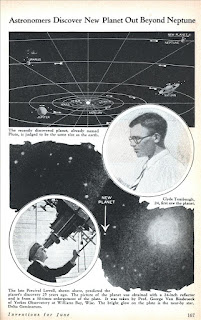“When sweet Yuletide comes in like a bride
With holly and ivy clad.
In the dark of the year, much mirth and good cheer
In every household is had!
The country guise is then to devise
Some gambols of Yuletide play
Whereas the young men do the best that they can
To drive the cold Winter away.”
~17th Century holiday song
The diminishing of daylight has finally halted here in the northern hemisphere. An unbelievable two years have passed since the magical night of the 2010 Winter Solstice total lunar eclipse.
This year, misinterpretations of the Mayan calendar predicting “the end of the world” have unfortunately garnered most of the attention usually associated with this pivotal day, to the point that the day’s real significance has become obscured.
Scientists debunking the end of the world myth state that December 21, 2012 will be just an ordinary day, but minus the year, this can never be just an ordinary day. It is a day that for more than 5,000 years has been celebrated as a miracle, the rebirth of light in the depths of darkness.
The fact that so many forget this is another reminder of just how disconnected we have become with the natural world around us. We fear a mythic end while at the same time remain blind to the real peril we are inflicting on the planet in the form of climate change.
This year, those of us in the US northeast were reminded of just how much we depend on nature and the environment around us after sustaining massive loss of power in the wake of Hurricane Sandy. For a brief time, we experienced what our ancestors throughout most of history went through every year, not just for a week but for months on end.
Hurricanes are normally summer storms, but Sandy came at the end of October—the beginning of “the dark of the year,” historically the most frightening time people faced.
For those of us without power, daylight became a premium, a scarce few hours when any activity requiring decent lighting had to get done. Because central heating for so many depends on having electric power, we were faced with home temperatures plunging into the 50s. There was fear—what if power wasn’t restored for weeks? The weather was rapidly getting colder, and a nor’easter brought snow only nine days after the hurricane.
Significantly, many of us also experienced the kind of community support and goodwill often associated with the Winter Solstice. When one side of my street had power and the other did not, those who had power allowed their neighbors to run extension cords across the street so they could at least have minimal lighting. At one point, no less than six extension cords ran across the street. People shared generators with their neighbors. They brainstormed for the most innovative and creative ways to give even minimal power to as many people as possible.
We realized instinctively that no one could get through this alone.
This is what late fall and winter have been for thousands of years to people in temperate climates—a desperation to create as much warmth and light as possible in the face of the waning Sun, a profound fear in the face of months of dark and cold when food couldn’t grow, and all were at the mercy of a harsh environment.
Even though people long ago understood that the growing and diminishing of sunlight are a cycle that repeats annually, there was still subconscious fear that we could lose the Sun. The Sun was viewed by many as a ball of fire, and all fires eventually go out. What if that happened to the Sun?
At a Halloween celebration, one woman spoke of how her granddaughter asked for more candles since the few her family had did not give enough light. No matter how many candles we light, they will never be the same as electricity, they told the girl.
In the movie “Star Trek IV: The Voyage Home,” an alien probe causes the Earth to experience almost complete cloud cover. The president of the United Federation of Planets responds by reminding Starfleet officials that, “even with backup generators, we cannot survive without the Sun.”
Even though in modern times we understand that the Sun doesn’t change at all during the seasonal cycles, when faced with darkness and cold, that primal fear often returns. And with that fear is a longing for the light, whether conscious, semi-conscious, or unconscious. That is why so many, even with power, experience depression or Seasonal Affective Disorder at this time of year.
Many cultures have overlaid what used to be Solstice celebrations with festivities commemorating religious or historic events. Unfortunately, this often results in people missing the miracle that happens every year to all of us, right in front of us. In the depths of darkness, light is reborn. This makes the Solstice everybody’s holiday, regardless of sectarian, ethnic, or other differences (with the seasons reversed in the southern hemisphere).
Sandy reminded those of us she affected that to really appreciate the light and warmth, we need to fully experience the dark and cold. Similarly, to truly value the wonder of our magnificent planet, we need to face head on just how much we are a part of the planet and confront the degree of harm and destruction we are inflicting on it with the illusion that somehow, we will walk away unscathed.
The Solstice is our annual reprieve from darkness and death. Whether there will be a reprieve from the destruction we are inflicting on the Earth is ultimately up to us. There is no better time to choose life-affirming change than right now.
2 years ago






